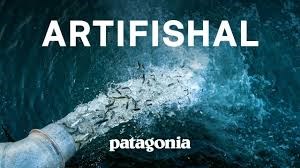In the newly released documentary Artifishal, an Indigenous fisher is quoted saying, “Many of today’s problems are a result of the stories we were told or told ourselves that were wrong.”
We’ve been told that hydroelectric power is clean, even “green,” and that damming wild salmon rivers can be mitigated by installing fish ladders, transporting returning salmon around dams and having hardworking volunteers run fish hatcheries.
But Artifishal, an eye-opening documentary by Patagonia, the iconic outdoor clothing and equipment manufacturer, looks at the three H’s that affect wild salmon: habitat, harvest and hatcheries. And it explores the staggering financial, cultural and ecological costs of our blind belief that human-made solutions can make up for habitat destruction.
Artifishal traces the impact of our fish factories — public hatcheries and private fish farms — and the ongoing high cost to the taxpayer and to the environment that these widespread practices carry.
For Yvon Chouinard, Patagonia founder and the film’s executive producer, Artifishal highlights a classic human folly: “Humans have always thought themselves superior to nature and it’s gotten us into a lot of trouble.”
In recent years, thanks to scientists Alexandra Morton and Kristi Miller, the public has become aware of both the ecological and human health impacts caused by the predominantly foreign-owned Atlantic salmon fish-farming industry. It has been far less popular to talk about fish hatcheries because they have become the fabric of so many communities wanting to give back to the environment, and because government agencies have evolved to unquestioningly spend millions of dollars supporting these artificial breeding programs in the name of salmon conservation.
There has been a growing body of literature, however, that not only indicates rearing fish in hatcheries (high densities in flow-through tanks) does not create the same fish as those bred in streams but that hatchery-born fish are interfering with the survival of wild salmon.
Salmon are highly complex creatures that have evolved over thousands of years, and many river-specific runs migrate not just hundreds but as much as a thousand miles upstream. Research reveals that returning salmon record all sorts of information in their genes, reflective of their specific journeys.
As far back as 2001, the Norwegian Journal of Freshwater Research was sounding the alarm, reporting that hatchery rearing of salmonids resulted in increased pre-adult aggression, decreased response to predators and decreased survival.
A decade later, the Skagit River System Cooperative published a study in 2013 that found hatchery smolt releases had a highly significant negative effect on native Skagit steelhead returns.
By artificially breeding every fish that returns to a specific area, are we not dumbing down the gene pool, reversing natural selection to the point of devolving these highly complex and resilient fish?
After Mount St. Helens erupted in 1980, wild steelhead runs not only returned to the drastically changed Toutle River but returned in even greater numbers than previously recorded.
The film also unveils the huge financial costs that have been invested in the hatchery industry. Although Washington State spent $320 million decommissioning the Elwha River Dam, it then spent $17 million on a new hatchery, negating the purpose of decommissioning.
Moreover, Artifishal reports that the average hatchery fish size has dwindled from 22 lb. to 10 to 12 lb., and if that isn’t sufficiently alarming, Oregon’s Bonneville Power Administration painstakingly calculated that it spends $68,000 per hatchery steelhead.
If the stories we’ve been told or we’ve told ourselves have been wrong, what should we do?
We must prioritize preserving and conserving intact ecosystems ahead of mitigating our actions afterwards. Failing that, work with nature to increase the health and resilience of our remaining natural areas (e.g., removing invasive plants from riparian areas, parks and trails).
With storytelling comes responsibility.
Melissa Chaun of Port Moody is an ecologist with a passion for all things sustainable. She is events co-ordinator with the Rivershed Society of BC and volunteers on various city committees. Her column runs monthly.



